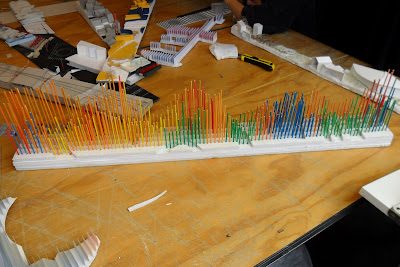Sticking on the idea of 'waking up,' the next task was to choose a place on the site where we would want to wake up, and then augment the reality in the way Heine has by drawing in our beds there.
I chose the tall metal sculpture at the large park beside Vector Arena

At first the idea was to have a hammock underneath the sails, so that when I wake up the first thing I would see was this amazing pattern above me (This picture really doesn't do it justice), where in the morning the sun shines at particular angle so that the light is refracted and bent and forms these peculiar shadows on the bottom sail. It is something surreal, as if i've woken up but still dreaming, and is a peaceful sight to wake up to. Some people may find the view ugly, and that it is blocking the vast view of the sky which would be much more interesting to wake up to. Nevertheless, I wasn't able to express this idea to the tutors on Monday, and so I revisited the sculpture after the crit to recapture new ideas and inspiration to inform my detail model






